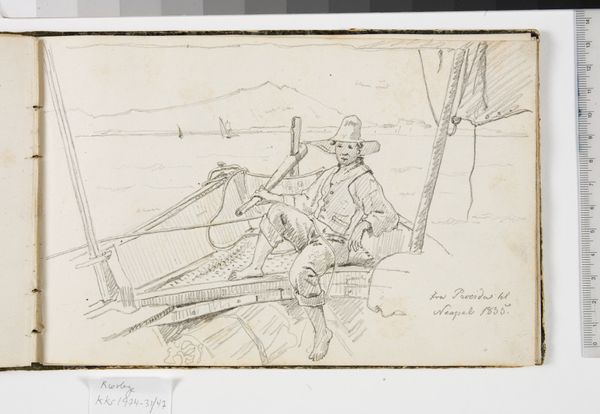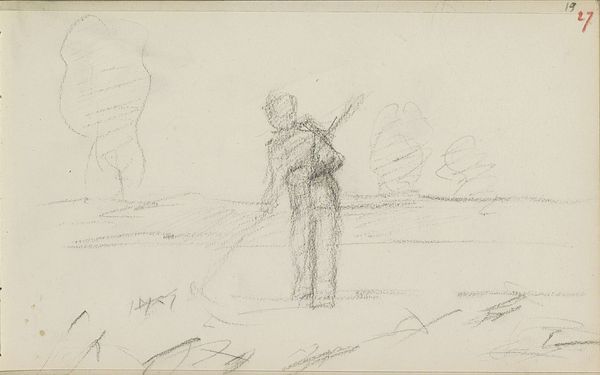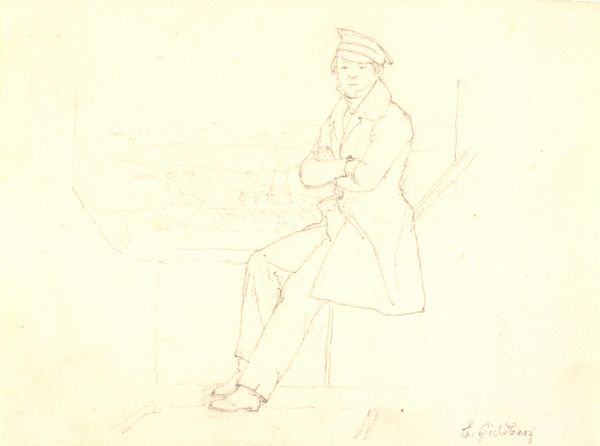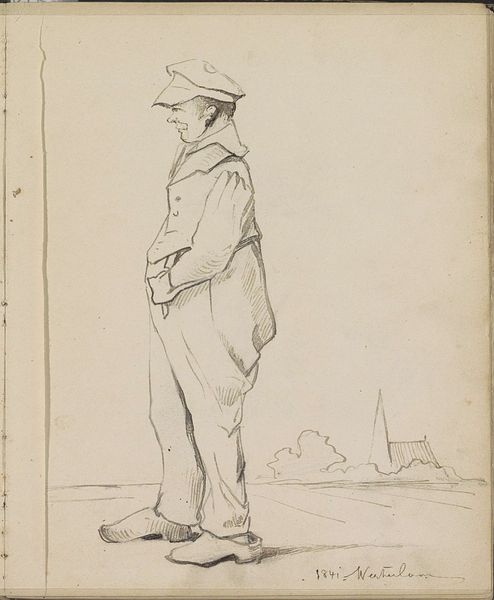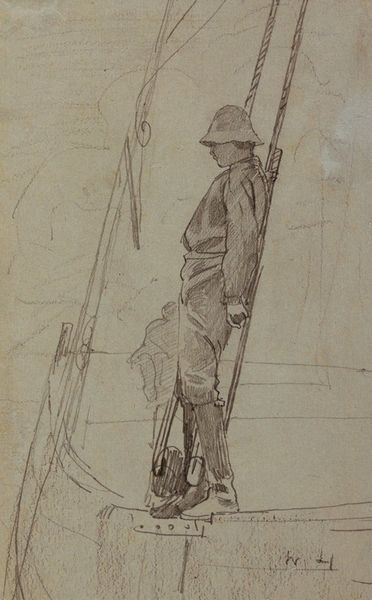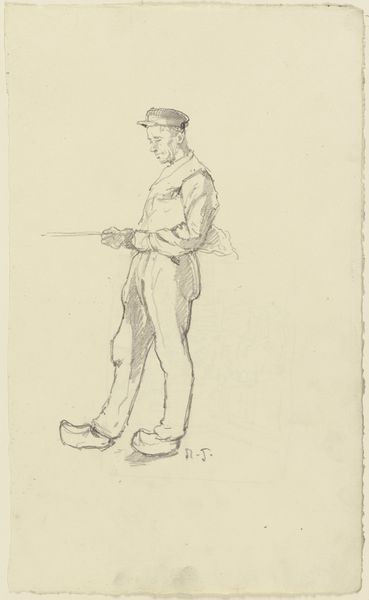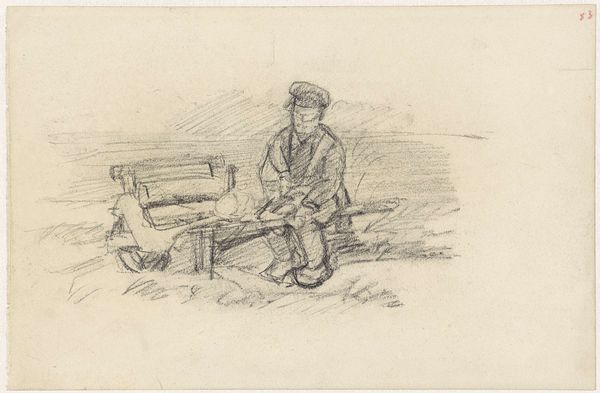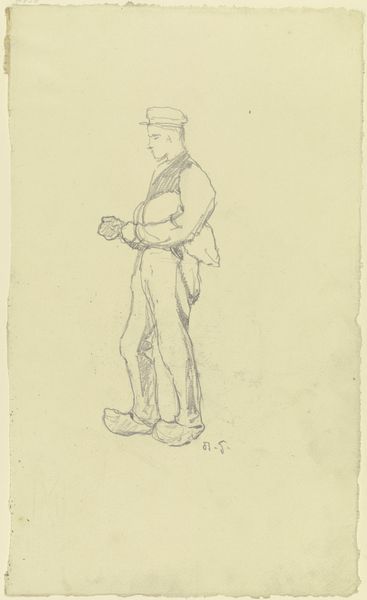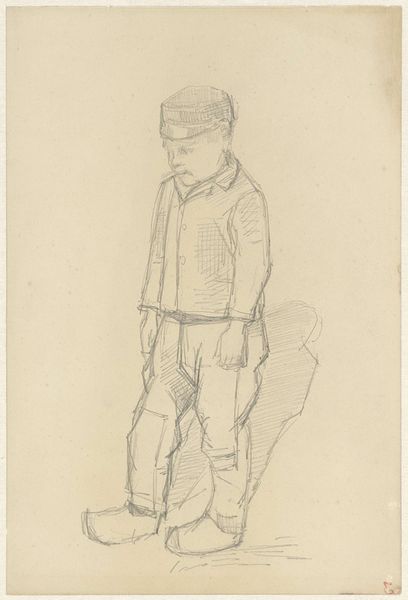
drawing, pencil
#
portrait
#
drawing
#
amateur sketch
#
light pencil work
#
quirky sketch
#
pencil sketch
#
personal sketchbook
#
idea generation sketch
#
sketchwork
#
pencil
#
sketchbook drawing
#
genre-painting
#
storyboard and sketchbook work
#
realism
#
initial sketch
Dimensions: height 213 mm, width 270 mm
Copyright: Rijks Museum: Open Domain
Editor: So, this drawing, "Boerenjongen zittend op een kruiwagen" by August Allebé from 1853, is deceptively simple. It looks like a quick sketch, but the boy's gaze is quite intense. What strikes you most when you look at it? Curator: You know, it's funny, I see that intensity too. Almost as if he's daring you to underestimate him. It reminds me of growing up in the countryside – that silent, watchful presence kids sometimes have, absorbing everything. It’s also fascinating how Allebé captures such a detailed likeness with such spare, economic lines. Did he plan this drawing in advance, or did he spontaneously compose it? I'm leaning toward the latter; what about you? Editor: I think you might be right – it feels spontaneous, almost like a snapshot. But, beyond the boy's expression, I find myself drawn to the composition itself. How Allebé uses the wheelbarrow to frame him is really interesting. Curator: Exactly! It elevates an everyday scene. It isn’t just a boy on a wheelbarrow; it's a boy *becoming* part of the landscape, connected to the very tools that define his world. Makes you wonder what he’s dreaming about, doesn’t it? Escaping that wheelbarrow, maybe, or mastering it? Editor: I hadn't thought about that, his connection to the landscape. I just saw him as a subject, but your interpretation gives it more depth. It’s no longer a simple sketch, is it? Curator: Never! Sketches are seldom about capturing just what's *there,* darling. They’re about capturing what *could be*. Thanks to your perspective, I also see how Allebé makes this little scene iconic. Editor: Well, thank *you* for turning my perspective. Now, if you don’t mind, I want to keep dreaming along with this boy.
Comments
No comments
Be the first to comment and join the conversation on the ultimate creative platform.

